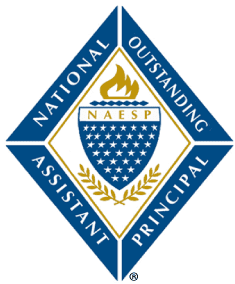
Denise Reynolds
Riverview Elementary School
Dawsonville, Georgia
dreynolds@dawson.k12.ga.us
Best Practices
1) According to John Hattie (2015), the most influential factor with the highest effect size to impact student achievement is collective teacher efficacy (CTE). As a school leader, it is my role to allow teachers to collaborate and share their expertise in a safe and trustwo1thy environment to support CTE development. The first step is to build relationships with the staff and support and develop a positive school culture that seeks a shared vision with embedded beliefs.
My role as the assistant principal is to support the principal and the staff. The best way to do both is through relationship building, trust, and credibility. I spent my first year at Riverview learning the staff, both professionally and personally. By doing this, I was able to develop relationships where over the years, the staff was willing to share the positives and negatives with me in a professional manner so that we could work together to overcome obstacles and celebrate success.
As the staff began to see my feedback as supportive and constructive to grow them as teacher leaders, it became even more powerful over time. Each year, they became open in our professional learning communities and willing to be vulnerable in sharing the ups and downs they were experiencing, whether it be professional or personal. Through the collaboration, they began to see the expertise throughout the building; they stepped out of their comfort zones to share their strengths. They utilized their colleagues to support one another in raising student achievement and holding themselves and the students accountable to high standards.
Over time, collective teacher efficacy surfaced, and “my students” became “our students.” Teachers were no longer teaching in isolation; they became a community of experts doing whatever it takes to support students. Celebrating one another while lifting each other up builds strong relationships. Riverview has found that there is no “I” in success, and we operate as ONE, approaching student growth and achievement as a team.
As Riverview continues to sustain high results, it is critical that leaders not forget the reason they continue to be successful. Best practice among leaders includes staying on the balcony and recognizing shifts in the staff, both professionally and personally. Leaders should seek the right amount of “push” that impacts an effective organizational change while considering the stress level that the change will bring to the teachers. Understanding this balance is the best practice for any leader, so it is essential to keep a pulse on the teachers and their capacity to give more. As we have experienced one of the most draining and demanding years in education due to the pandemic, keeping the staff together through relationships and culture building is more important now than ever. We should continue to celebrate small wins and focus on the strong beliefs held about student learning before our world was turned upside down overnight. Leaders should foster collective teacher efficacy, supporting teachers to overcome the most challenging obstacles and make the staff even stronger.
2) One of the key components contributing to Riverview Elementary students’ success is an intentional Multi-tiered System of Supports (MTSS) to maximize student achievement and minimize behavioral concerns. When I first arrived at Riverview, although the Response to Intervention (RTI) component of this framework was in place, it was necessary to fine-tune it and bring in more teacher collaboration. Based on the staff feedback, I felt the first step toward this organizational change was to create a master schedule to incorporate a common schoolwide segment for students to have differentiated interventions with a more significant number of staff members to implement and monitor. We created multi-grade level intervention groups to address reading and math deficits and behavior and emotional concerns. By utilizing all staff members, students participated in small group settings, increasing their self-confidence while teachers supported student growth and achievement. The newly developed master schedule also included a rotation of a double planning period every three weeks to dive into instruction and assessment through a Professional Learning Community (PLC) model, which included vertical teaming.
Part of each PLC included the incorporation of Data Teams for Learning (DT4L), adding in a data-driven team approach to student learning. With this model, teachers administered pre-assessment on priority standards per grade level to determine student levels. Teachers identified proficiency levels from the data and developed differentiated instructional plans collaboratively to meet the needs of all students. Over a specified period, students received enrichment or remediation as needed and were re-assessed to determine mastery levels after instruction. This process continues year-round, ensuring that every student has unlimited opportunities to master grade-level standards.
Furthermore, we began using the Measure of Academic Progress (MAP), a district-wide benchmark assessment to monitor student growth and achievement throughout the year for all grade levels. As K-5 students take this assessment three times per year, each grade level has achievement and growth data to adjust instruction continuously. In the PLC, teachers collectively dissected the data, made comparisons using national percentiles and student growth, and developed innovative instructional strategies through team collaboration. As we have primarily monitored achievement historically, the MAP data offered us a way to monitor student growth which is a key to meeting individual student needs. This data was insightful as it produced future proficiency levels and helped teachers look at the growth of low-performing students and high achievers.
As I am in my ninth year with most of the same staff, I have seen them grow professionally and become experts in this process. My goal was to share my knowledge with them and model best practices as their new assistant principal in 2016. Now they are proficient and can see the value in understanding how to meet the needs of all students through MTSS, so I can step back and
facilitate. Their self-motivation and commitment to learning for ALL students is the ultimate win for everyone!


